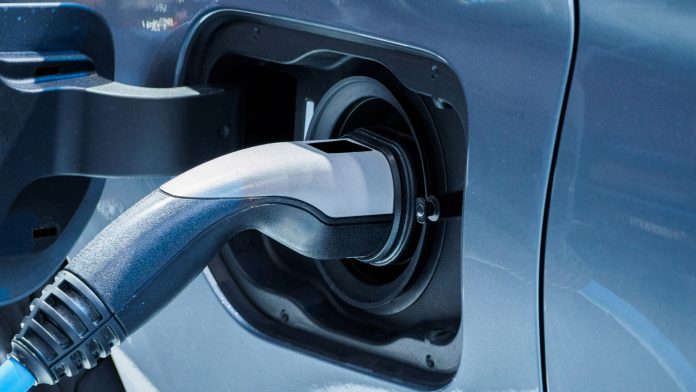Researchers at the Korea Institute of Science and Technology (KIST) have developed an innovative method for preventing irreversible energy loss in batteries.
When the batteries in an electronic device are fully charged, the device generally signals that they are at 100% capacity. However, a ‘fully charged’ device represents only 70-90% of the theoretical energy density that can be stored in the batteries.
This is due to the permanent energy loss in the form of Li ions that takes place throughout the initial charge in the stabilisation (formation) phase in the production of batteries. By averting this early demise of Li ions, the mileage of electric vehicles (EVs) and usage time of smartphones can be drastically increased.
Graphite-silicon oxide
In order to alleviate this problem, a group of scientists at the Korea Institute of Science and Technology (KIST), led by Dr Minah Lee from the Center for Energy Storage Research, Dr Jihyun Hong from the Center for Energy Materials Research, and Dr Hyangsoo Jeong from the Center for Hydrogen-Fuel Cell Research, has established an electrode pre-treatment solution that is efficient at decreasing this early Li ion loss in graphite-silicon oxide (SiOx, 0.5 ≤ x ≤ 1.5) composite anodes.
After being dipped in the solution, the anode, which was composed of 50% SiOx, exhibited insignificant Li loss, allowing a full cell to display almost ideal energy density.
Currently, the majority of batteries on the market use a graphite anode, but SiOx has been gaining considerable interest as a next-generation material for use as anodes because of its high capacity, which stands at five to ten times higher than graphite. However, SiOx also irrevocably consumes three times more active Li than graphite. Thus, scientists are turning towards a composite electrode, consisting of a mixture of graphite and SiOx, as a more sustainable and energy efficient solution for practical next-generation anodes.
Reducing initial energy loss in batteries
However, while there was a parallel rise in the capacity of graphite-SiOx composite electrodes at higher ratios of SiOx, researchers also observed a rise in loss of initial Li. As a result, the ratio of SiOx content in a graphite-SiOx composite electrode was limited to 15%, as increasing the ratio to 50% would result in an initial Li loss of 40%.
In order to concurrently attain high capacity and high initial proficiency, researchers have suggested numerous prelithiation techniques entailing the pre-doping of additional Li into the anode. The KIST research group led by Dr Minah Lee created a method in which the electrode is dipped into a novel solution to alleviate Li consumption by the SiOx electrode. The group then applied this process to a graphite-SiOx composite material with the capacity for substantial commercialisation.
The research team found that the pre-treatment solutions developed previously would cause the unintended insertion of solvent molecules with Li ions into the graphite, owing to the graphite’s versatile intercalation capability. This intercalation of large solvent molecules resulted in the structural breakdown of the graphite-SiOx composite electrode. To prevent electrode failure, the researchers developed a new solution using a weakly solvating solvent to reduce the interaction between the solvent and the Li ions. This solution enabled the selective insertion of Li ions into the active materials, ensuring a stable supply of additional Li to the graphite-SiOx composite electrode.
The initial Li consumption was entirely prohibited after the graphite-SiOx electrode was submerged in the solution refined by the group for around one minute, even at a 50% SiOx ratio. Therefore, the electrode demonstrated a high initial proficiency of almost 100%, indicating negligible Li loss (≤ 1%) in the initial charge. Electrodes generated as part of this process had a capacity 2.6 times greater than standard graphite anodes, whilst also retaining 87.3% of the initial energy capacity after 250 charge-/discharge cycles.
Dr Minah Lee from KIST commented: “As a result of this study, we should be able to increase the SiOx content in graphite-SiOx composite anodes to over 50%, as opposed to the 15% ratio allowed by conventional materials, making it possible to produce lithium-ion batteries with a greater capacity and improve the mileage of future EVs.”
Dr Jihyun Hong, a co-researcher at KIST, added:, “The technology is safe and suitable for mass production, and therefore is likely to be commercialised.”










good news